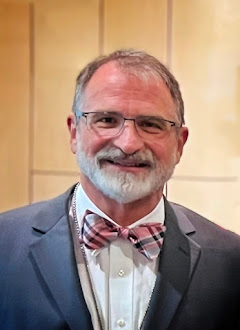“Healing the Nations”
Psalm 67; Rev. 21:10, 21:22-22:5[1]
Another tragic distortion of the
The problem with this perspective is that it turns the whole
From the biblical perspective, our faith is not all about me at all! It’s also not about you! What it’s about is God’s work of redemption that is “making all things new.” God’s purpose is not about choosing a select few who can enjoy the benefits of new life while the vast majority of humankind go down the drain! It never has been! It always has been and always will be all-inclusive, all-embracing. When God called Abram, he promised that through Abram’s descendants, “all the families of the earth” would be blessed (Gen. 12: 3). The Christian faith is about joining with God in the project of redeeming other people, not taking something and hoarding it and hiding from them.
The same perspective is found in Revelation. When John gets down to the end of his fantastic vision, he describes the new city of God as one in which God dwells and his glory enlightens, and he says, “The nations will walk by its light, and the kings of the earth will bring their glory into it” (Rev. 21:24). He also describes a new Garden of Eden, with the river of the water of life flowing from the throne of God, and the tree of life in the midst. And tucked away in the midst of all these visions of beauty, he says, “and the leaves of the tree are for the healing of the nations” (Rev. 22:2)!
The whole purpose of the renewal of creation is that all the nations may enjoy the warmth and light of God’s life shining on them! The whole purpose of the beautiful new life flowing like a river and flourishing like a great tree is for “the healing of the nations.” In other words, God blesses us with life and love and joy and hope in order that we might lead others into that same blessing of life and love and joy and hope. In a very real sense, our faith constitutes a call to invest our lives for the sake of others and for the sake of the
The recent film “Freedom Writers” is based on the real life story of a young, idealistic teacher named Erin who dares to invest herself in the lives of a group of teenagers in
In the process, she transforms them into a group of kids who dare to make a difference. It’s a tremendous testimony to the power of her love. The transformation they undergo is a dramatic evidence of the power of the freedom she gave them in her classroom. It is a kind of parable of the power of life that sets them free from almost certain death due to gang violence and enables them to tap into their creative potential.
The interesting thing about the story is that, for all their differences, they really do have a lot in common. Most of them live in an area where people are regularly killed on the street. In one moving class exercise, she has the students play the “Line Game” to find out how much they have in common. What they all have in common is that they have all lost friends due to violence. Over time, they forge a community in their classroom where they all feel safe because they have broken down the walls that had divided them and had threatened them with violence and even death.
All this happens because one person dares to believe that they are worth the time and the energy it takes to invest in a future for them other than death or prison. She takes a great risk for them—if her experiment had failed, I doubt she would have had a job. Their story is a striking example of the way the

